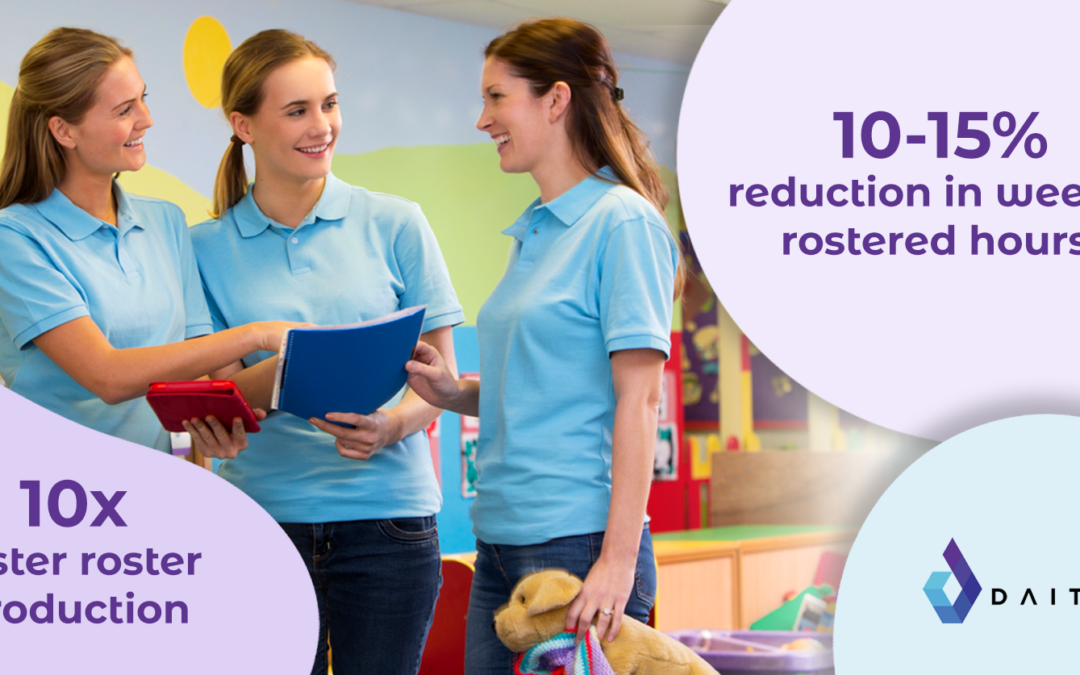The Childcare Rostering Compliance Challenge
Childcare in Australia is tightly regulated to ensure the highest quality of care across all service providers. The National Quality Framework (NQF) enforces a strict standard that covers qualifications of educators and educator-to-child ratios. Childcare centres have a duty of care to comply with this framework, all the while juggling their own staff well-being and retention, as they face staff shortages. Add to the mix, their goal to stay competitive in a demanding and crowded industry (there are almost 11,000 childcare centres nationally excluding OSH, to cater for the 1.4m+ children attending) and you’re beginning to see the complexities at play.
Compliance with the NQF therefore is the initial building block on which the weekly childcare roster is created. And despite the many hats that centre managers wear, this also typically falls upon these highly valuable and time poor individuals to undertake. To add to this, there is a general misconception of just how complex a task rostering optimally is to do. And while centre managers typically do a great job utilising their skills and experience to create a compliant roster, the sheer complexity of additional considerations means, they simply cannot cater for all the competing requirements.
Conceptually, the task of rostering is easy to grasp – simply determine the days and times educators work over the course of a week. However, there are many considerations to then factor in, including;
- Staff to child ratios (Compliance)
- Staff availability
- Child occupancy
- Non-contact hours (for programming time)
- Break times
- Shift preferences
- Float staff
- The mix of permanent full-time, part-time, and casual staff
A Simple Rostering Scenario
To illustrate the magnitude of the rostering task, let’s imagine a very simple scenario: rostering a single part-time educator who can work between 4-8 hours each day and a total of 26 hours across the week. Assuming work always starts either on the hour or half past and that shifts are always in full hours, there are already 65 options to consider, just for the first day. Or a staggering 275,000 options across the first three days. Then additional factors come into play as the total number of hours rostered may start to exceed the weekly limit.
Ignoring all of the many other complexities, the example outlined above would already yield roughly 2.3 x 10^75 combinations across 30 staff. Astonishingly, that number is greater than the number of atoms in the universe (let alone the total number of children on earth)!
That is why, from a mathematical perspective, such problems are known to be ‘hard’. In fact, it takes some significantly smart algorithms to yield high-quality outcomes, in an acceptable amount of time. No one should be expected to be able to deal with this kind of complexity without the appropriate tools.
The Childcare Rostering Solution
Enter Daitum’s AI SaaS platform and the ‘Rostering for Childcare’ solution, that uses the platform’s state-of-the-art optimisation technology to intelligently explore an incredibly vast number of different rosters and return one that is not only compliant but also honours shift requests where possible and reduces overall labour costs. All within minutes, at the click of a button.
The significant benefits are being seen across all Daitum’s childcare clients, such as;
- reducing the total cost of the roster in the order of 8-10%,
- delivering 100% compliance,
- 10x faster roster production,
- improving staff wellness and retention.
Most importantly though, it is taking the complexity and risk out of ensuring compliant rosters, while freeing up the centre managers (1-1.5 days a week) to do far more important value add work with their staff, the parents and their children.



